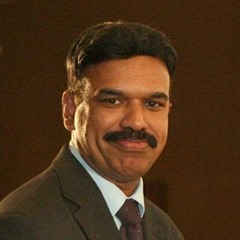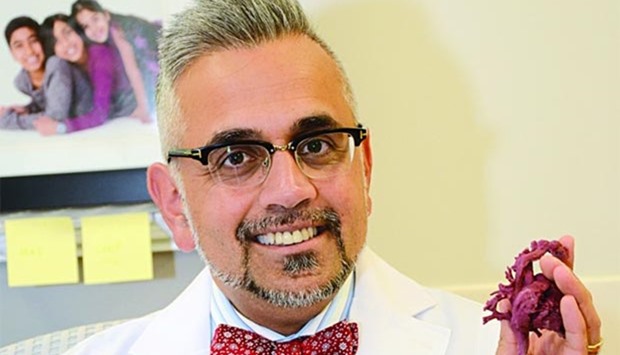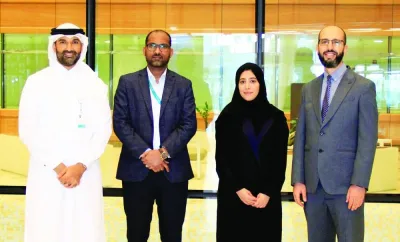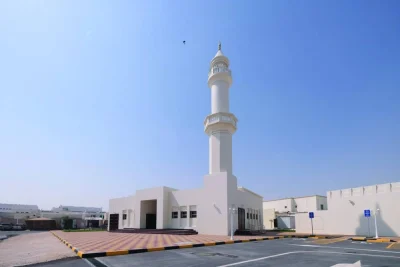Sidra Medical and Research Center (Sidra) is making use of 3D printed models for pre-surgical assessments, Gulf Times has learnt.
“Sidra is taking a transformative approach to patient care by introducing anatomically accurate 3D printed models for pre-surgical planning. 3D models can help our surgeons assess the complications within the patient’s anatomy prior to surgery,” said, Dr Deepak Kaura, chair of radiology at Sidra, in a recent interview with Gulf Times.
Displaying the 3D model of a paediatric patient’s heart featuring several congenital defects, Dr Kaura noted that reviewing the 3D model helps the surgeons visualise complicated anatomy with a tangible model that can help minimise unknown risks during a surgery.
“This enables the surgeons to plan the surgeries well in advance. They can anticipate what type of complications they may face during the process and prepare accordingly,” Dr Kaura highlighted.
Sidra recently launched its paediatric surgery clinic where pre-surgical consultations are provided before the surgery is performed at Hamad Medical Corporation. Sidra is expected to start day time surgery by next month.
According to Dr Kaura, apart from pre-surgical planning, 3D models can also aid in patient education as patient experience at Sidra is centred on patients and their families.
“Our patients are partners in their journey of treatment and medication by showcasing the process of what the surgery entails. It takes away some of the fear and stress of the unknown. We believe that the more our patients are educated about their condition and the treatment methods, the better the outcomes,” he explained.
The official pointed out that a 3D model may require around one to two hours for printing. The Sidra Outpatient Clinic’s 3D printer currently has the capacity to print approximately 20 models at a time. For example, a CT scan of a neck can be converted into a 3D image in an hour with an additional hour and a half required for printing the model from the scans.
Dr Kaura elaborated: “Our radiologists and technicians are trained on how to convert CT or MRI scans into 3D images.This is a manual process and requires expert skills to highlight the areas that will eventually be printed into a 3D model.”
Sidra currently uses nylon for its 3D models, but is preparing to put in place a state-of-the-art carbon 3D printer. Dr Kaura explained: “This will help make stronger 3D models. Once installed, Sidra, as far as we are aware of, will be the only organisation in the healthcare industry with a carbon fibre printer.”
Dr Kaura also maintained that the use of the 3D printers at Sidra will advance clinical research and innovation.“We want to make use of 3D technology to showcase our commitment to innovation. We are currently in the process of developing several prototypes that will help our patients and surgeons in terms of better treatment methodologies and equipment,” he said.
The official felt that 3D models may also serve as mementos for patients and their families. “We can provide a 3D model after the procedure – to showcase the difference made post-surgery. Many families find it useful to keep the comparative models to showcase to their children when they are older – it is part of the healing process for both child and family,” Dr Kaura added.
Displaying the 3D model of a paediatric patient’s heart featuring several congenital defects, Dr Kaura noted that reviewing the 3D model helps the surgeons visualise complicated anatomy with a tangible model that can help minimise unknown risks during a surgery.
“This enables the surgeons to plan the surgeries well in advance. They can anticipate what type of complications they may face during the process and prepare accordingly,” Dr Kaura highlighted.
Sidra recently launched its paediatric surgery clinic where pre-surgical consultations are provided before the surgery is performed at Hamad Medical Corporation. Sidra is expected to start day time surgery by next month.
According to Dr Kaura, apart from pre-surgical planning, 3D models can also aid in patient education as patient experience at Sidra is centred on patients and their families.
“Our patients are partners in their journey of treatment and medication by showcasing the process of what the surgery entails. It takes away some of the fear and stress of the unknown. We believe that the more our patients are educated about their condition and the treatment methods, the better the outcomes,” he explained.
The official pointed out that a 3D model may require around one to two hours for printing. The Sidra Outpatient Clinic’s 3D printer currently has the capacity to print approximately 20 models at a time. For example, a CT scan of a neck can be converted into a 3D image in an hour with an additional hour and a half required for printing the model from the scans.
Dr Kaura elaborated: “Our radiologists and technicians are trained on how to convert CT or MRI scans into 3D images.This is a manual process and requires expert skills to highlight the areas that will eventually be printed into a 3D model.”
Sidra currently uses nylon for its 3D models, but is preparing to put in place a state-of-the-art carbon 3D printer. Dr Kaura explained: “This will help make stronger 3D models. Once installed, Sidra, as far as we are aware of, will be the only organisation in the healthcare industry with a carbon fibre printer.”
Dr Kaura also maintained that the use of the 3D printers at Sidra will advance clinical research and innovation.“We want to make use of 3D technology to showcase our commitment to innovation. We are currently in the process of developing several prototypes that will help our patients and surgeons in terms of better treatment methodologies and equipment,” he said.
The official felt that 3D models may also serve as mementos for patients and their families. “We can provide a 3D model after the procedure – to showcase the difference made post-surgery. Many families find it useful to keep the comparative models to showcase to their children when they are older – it is part of the healing process for both child and family,” Dr Kaura added.




